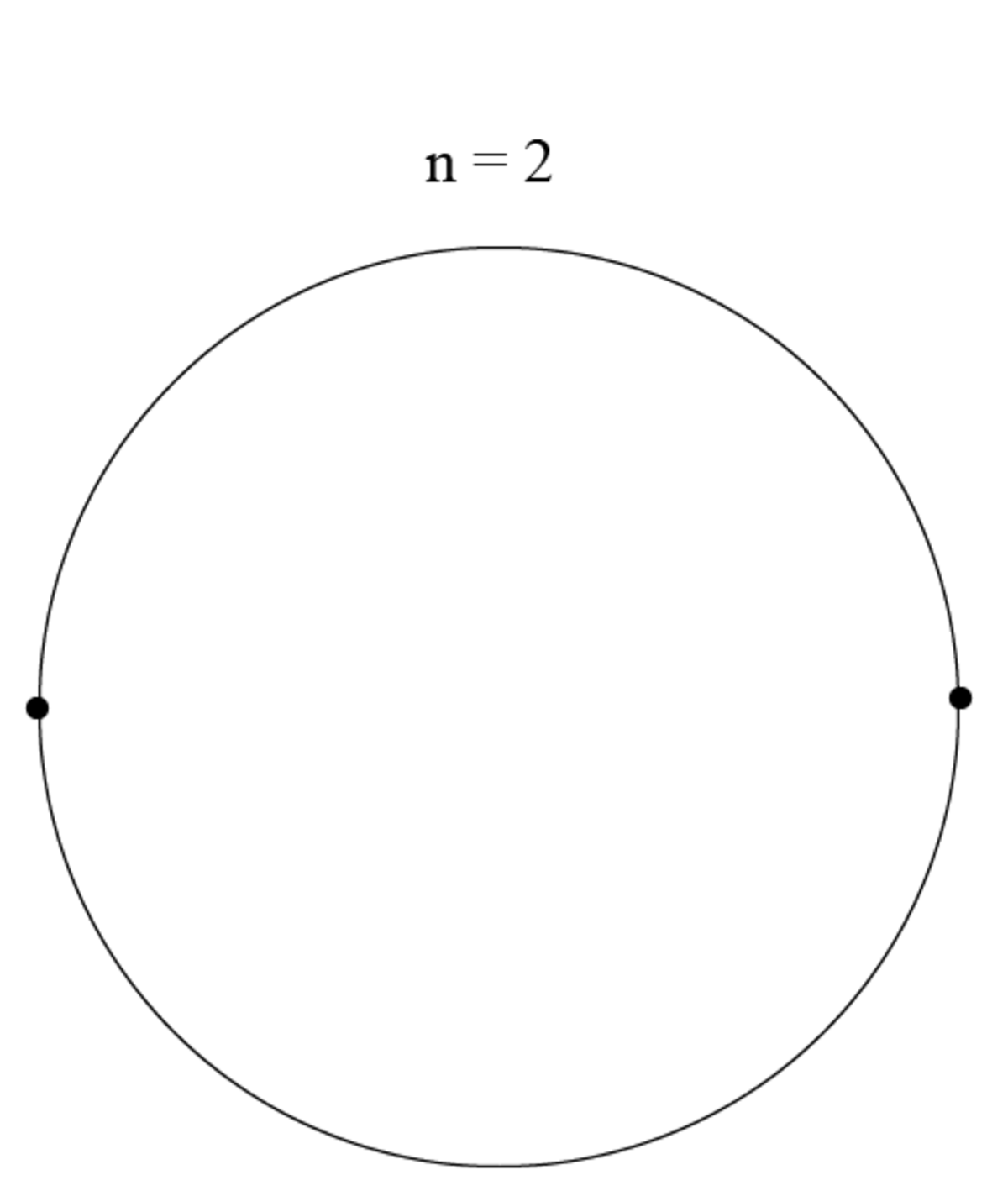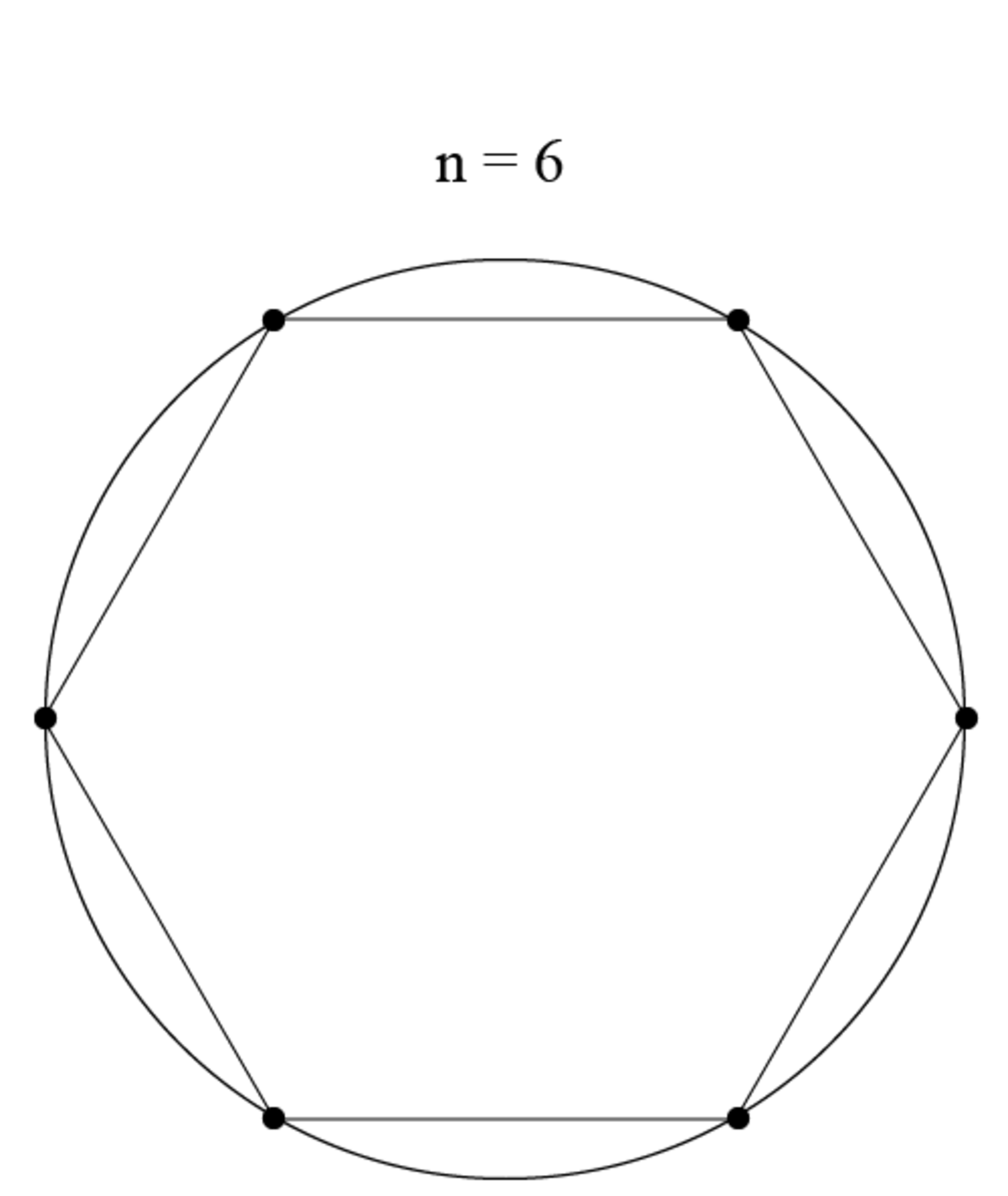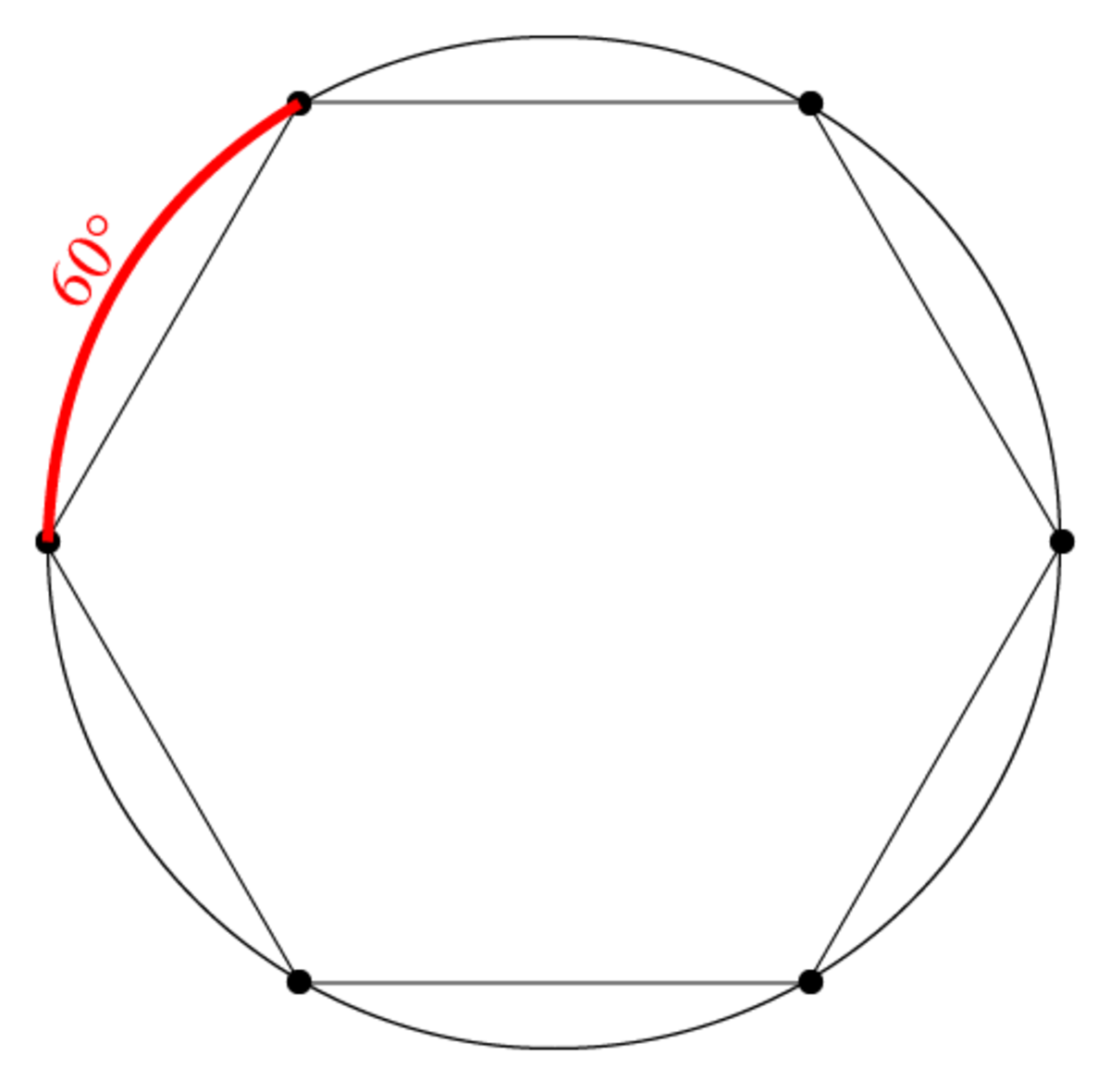Cool distribution on a circumference
n points are selected at random on the circumference of a circle, and your task is to give the central angle (in degrees) of the arc that is guaranteed to contain all n of the points.
If n = 2 , the answer is 180.
If n = 6 , what is your answer?
The answer is 300.
This section requires Javascript.
You are seeing this because something didn't load right. We suggest you, (a) try
refreshing the page, (b) enabling javascript if it is disabled on your browser and,
finally, (c)
loading the
non-javascript version of this page
. We're sorry about the hassle.
2 solutions
You have proved that an arc of at least 300º is necessary, but Why the worst scenario is when the points are evenly distributed (This is is true), i. e,but Why an arc of at least 300 º is sufficient to cover 6 random points on a circumference?
Log in to reply
If they are not evenly distributed, one of the gaps must be larger than 6 0 ∘ . In that case the arc not containing this gap will contain all the points and will be smaller than 3 0 0 ∘ .
I am confused. If 6 points are selected at random, couldn't 5 of the points be directly opposite the 6th point, in which case it is identical to the first case where n = 2 and the answer would be 180. Unlikely occurrence, but if truly random, it could happen.
Log in to reply
It could happen, althought the probability is 0. Nevertheless, that is not the question. The question is for all possible positions that can occupy or place 6 points on a circumference. For example, a possible position is the six points forming a regular hexagon, althought the probability for this happening is also 0.
DISCLAIMER: This is a very similar proof to @Marta Reece , but with a visual aspect.
First, we must figure out how to solve for n = 2 . Then, we can understand how to solve for n = 6 We can generalize this, later!
Since we want an arc to contain all possible points, we need to have an example where the points are as spread out as possible. For
n
=
2
, this means they would be opposite of each other:

Since we need half a circle, the answer would be 180°.
Now, we can solve for n = 6 .
In order to have all 6 points as spread out as possible, we could label the points as the vertices of a regular hexagon inscribed in a circle:

Since
6
1
th
of the circle is between each of the points, that means that there must be
6
3
6
0
= 60° between each point on the circle:

The black arc covers all of the points, so the red arc can be subtracted from the circle, to get 3 6 0 − 6 0 = 3 0 0
Now, we can generalize for n . We can think of inscribing a regular polygon with n sides inside a circle, with each of the vertices as a point on the circle. We can subtract one of the arcs made by two adjacent points. The arc between two adjacent points would be n 3 6 0 . Therefore, the maximum central angle necessary to contain n points on a circle would be represented as 3 6 0 − n 3 6 0 .
Notice how n → ∞ lim 3 6 0 − n 3 6 0 = 3 6 0 . This makes sense because, as the regular polygon approaches a circle with infinitely many vertices, there becomes less and less space. Really cool stuff happening here! Awesome problem!
The worst scenario is when the points are evenly distributed. Then the angle between two points is 6 0 ∘ , so the arc containing all has to be 3 6 0 ∘ − 6 0 ∘ = 3 0 0 ∘ .